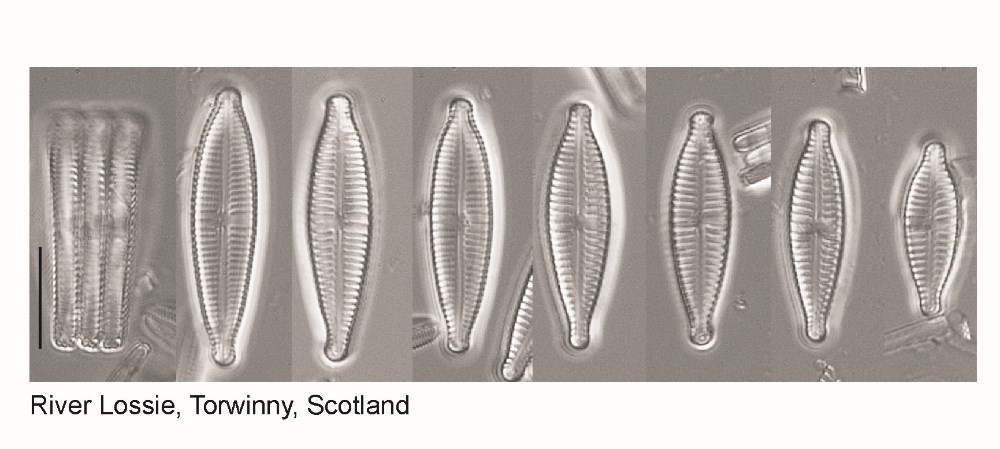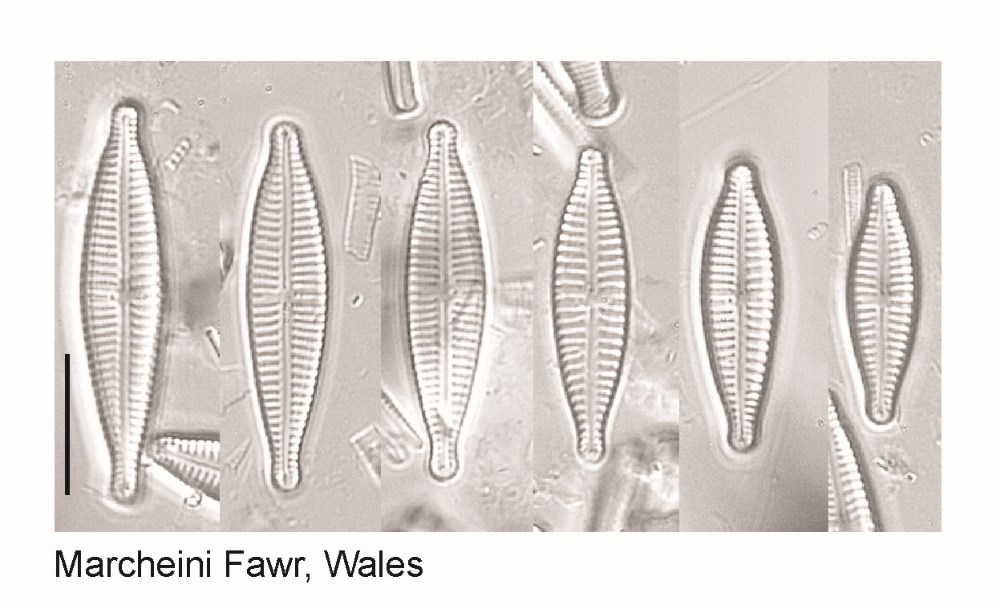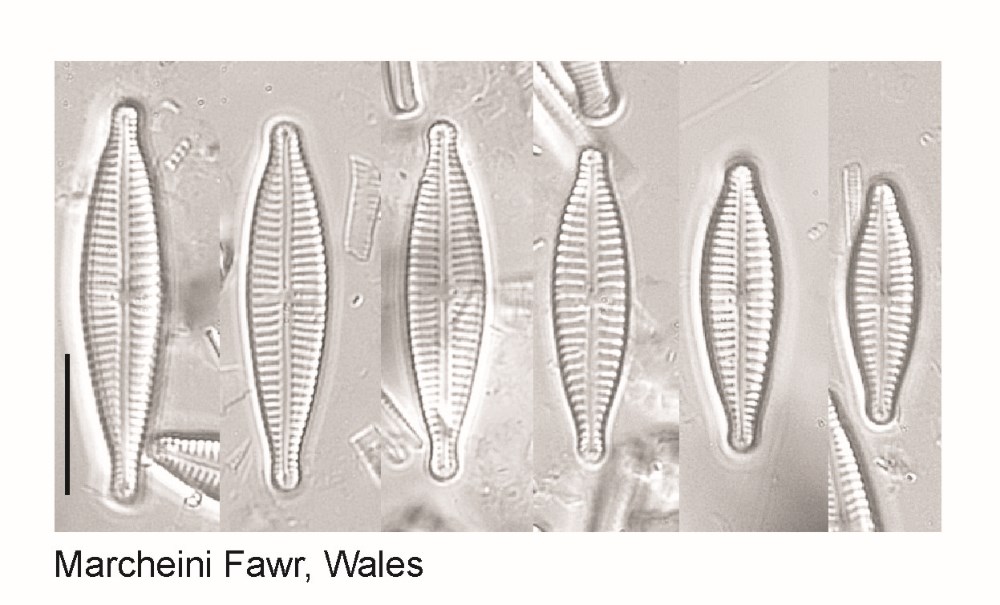Gomphonema parvulum (Kützing) Kützing; 1849; 65
Key references
Rose D.T., Cox E.J. 2013. Some diatom species do not show a gradual decrease in cell size as they reproduce. Fundamental and Applied Limnology. 182(2): 117-122.
Morphology
Shape
Lanceolate with rostrate to subcapitate poles which can be slightly deflected.
Symmetry
Heteropolar, slightly dorsiventral.
Striae
More or less parallel throughout the valve, sometimes slightly radiate towards the foot pole; slightly more widely spaced at centre of valve; one short central stria on the secondary side of the valve, a slightly shortened stria on the primary side close to one 'stigma'; areolae not visibible.
Axial area
Narrow, straight.
Central area
Small and transversely expanded on one side due to one short stria.
Raphe
Straight or very slightly undulate with slightly expanded central endings; polar nodules visible at each pole before the apices; terminal fissures indistinct.
Other features
Single isolated pore at end of central stria on one (more convex) side of the valve.
SEM morphology
External areola openings occluded by lateral flaps creating C, E and S shapes.
Apical pore field bisected by the raphe at foot pole.
Lanceolate with rostrate to subcapitate poles which can be slightly deflected.
Symmetry
Heteropolar, slightly dorsiventral.
Striae
More or less parallel throughout the valve, sometimes slightly radiate towards the foot pole; slightly more widely spaced at centre of valve; one short central stria on the secondary side of the valve, a slightly shortened stria on the primary side close to one 'stigma'; areolae not visibible.
Axial area
Narrow, straight.
Central area
Small and transversely expanded on one side due to one short stria.
Raphe
Straight or very slightly undulate with slightly expanded central endings; polar nodules visible at each pole before the apices; terminal fissures indistinct.
Other features
Single isolated pore at end of central stria on one (more convex) side of the valve.
SEM morphology
External areola openings occluded by lateral flaps creating C, E and S shapes.
Apical pore field bisected by the raphe at foot pole.
Literature
References are given in chronological order.
Reference |
Citation |
|---|---|
| Kützing F.T. 1844. Die Kieselschaligen Bacillarien oder Diatomeen. Fr. Fritsch, Nordhausen. 152 pp; 30 pls | Morphology; Description; Taxonomy; Illustrations |
| Kützing F.T. 1849. Species Algarum. Lipsiae. F.A. Brockhaus. 922 pp. | Taxonomy |
| Dawson P.A. 1972. Observations on the structure of some forms of Gomphonema parvulum Kütz. British Phycological Journal. 7: 255-271. | Morphology; Illustrations |
| Krammer K., Lange-Bertalot H. 2004. Süßwasserflora Mitteleuropas. Bacillariophyceae. 4. Teil. Achnanthaceae. Kritische Ergänzungen zu Achnanthes s.l., Navicula s.str., Gomphonema. Eds Ettl H., Gärtner G., Heynig H., Mollenhauer D., Gustav Fischer Verlag, Stuttgart. 468 pp | Illustrations; Ecology |
| Hofmann G., Werum M., Lange-Bertalot H. 2011. Diatomeen im Süßwasser-Benthos von Mitteleuropa. A.R.G. Gantner, Ruggell. 908 pp | Morphology; Illustrations |
| Rose D.T., Cox E.J. 2013. Some diatom species do not show a gradual decrease in cell size as they reproduce. Fundamental and Applied Limnology. 182(2): 117-122. | Morphology; Biology; Illustrations; |
This page should be cited as:
Cox E. J., Jüttner I. Gomphonema parvulum (Kützing) Kützing; 1849; 65. In: Jüttner I., Carter C., Cox E.J., Ector L., Jones V., Kelly M.G., Kennedy B., Mann D.G., Turner J. A., Van de Vijver B., Wetzel C.E., Williams D.M..
Freshwater Diatom Flora of Britain and Ireland. Amgueddfa Cymru - National Museum Wales. Available online at https://naturalhistory.museumwales.ac.uk/diatoms/browsespecies.php?-recid=2563. [Accessed:
].
Record last modified: 27/12/2020






